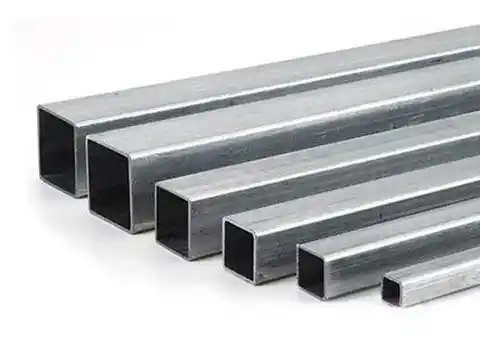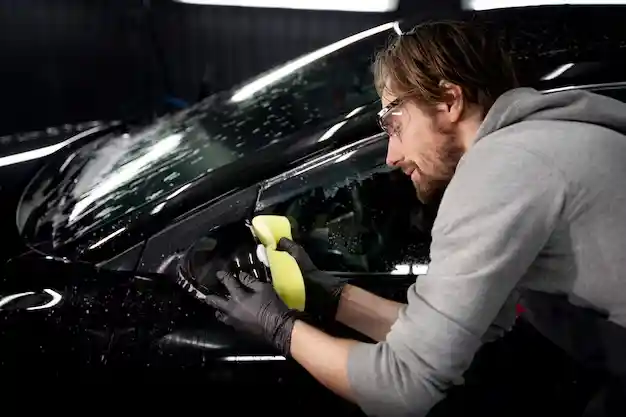What is Galvanized Square Steel?
Galvanized square steel is a vital component in various industries due to its strength, versatility, and resistance to corrosion. This material is widely used in construction, manufacturing, engineering, and other sectors for its durability and aesthetic appeal. The process of galvanization, which involves coating steel with a layer of zinc, enhances the material’s performance by providing an extra layer of protection against harsh environmental conditions.
In this article, we will delve into the characteristics, uses, and benefits of galvanized square steel, shedding light on why it has become a popular choice for various applications. From its manufacturing process to its wide range of uses, you’ll understand why galvanized square steel remains a go-to material in modern industry.
What is Galvanized Square Steel?
Galvanized square steel is simply square-shaped steel that has been coated with zinc to prevent rust and corrosion. The galvanization process involves immersing the steel in a bath of molten zinc or spraying it with a zinc coating. The result is a product that combines the strength of steel with the protective qualities of zinc.
Unlike plain steel, which can easily rust when exposed to moisture, galvanized steel provides an added layer of defense. This makes it ideal for outdoor use and in environments prone to corrosion, such as coastal areas or industrial sites.
The Galvanization Process
The galvanization process involves several stages, each designed to enhance the steel’s resistance to corrosion and improve its overall performance.
- Surface Preparation: Before the steel can be galvanized, it must be thoroughly cleaned to remove any dirt, oil, or rust. This is typically done using acid baths or abrasive cleaning techniques.
- Zinc Coating: The steel is then dipped into a bath of molten zinc, which forms a strong bond with the surface of the steel. This creates a zinc-iron alloy coating, which is highly resistant to rust and corrosion.
- Cooling and Inspection: After the steel has been coated, it is allowed to cool and harden. The final product is inspected for consistency and quality to ensure it meets the required specifications.
The result is galvanized square steel, which has improved durability and longevity compared to regular steel.
Key Benefits of Galvanized Square Steel
The popularity of galvanized square steel can be attributed to the numerous advantages it offers over uncoated or untreated steel. Some of the key benefits include:
- Corrosion Resistance: The most notable advantage of galvanized steel is its ability to resist corrosion. Zinc acts as a sacrificial anode, meaning it corrodes before the steel does, keeping the underlying material protected for many years.
- Longevity and Durability: Galvanized square steel is designed to last for decades, even in challenging environments. This makes it a cost-effective choice for long-term projects and reduces the need for frequent maintenance or replacement.
- Improved Strength: The process of galvanization adds to the strength of the steel by providing an extra layer of protection. Galvanized steel maintains its structural integrity over time, even in harsh conditions.
- Low Maintenance: Galvanized steel requires minimal maintenance compared to untreated steel. Once it has been galvanized, it’s largely resistant to wear and tear, reducing the overall cost of upkeep.
- Aesthetic Appeal: Galvanized steel has a distinct, shiny appearance that can add an industrial charm to projects. Whether used in architectural designs or as part of machinery, the aesthetic qualities of galvanized steel are appealing to designers and engineers.
- Environmentally Friendly: Zinc is an abundant and recyclable material, making galvanized steel a sustainable choice. The production process is also energy-efficient compared to other forms of metal coating.
Applications of Galvanized Square Steel
Galvanized square steel is a versatile material that is used in a wide range of applications. Some of the common uses include:
- Construction: In construction, galvanized square steel is often used for framing, supports, and structural elements. Its ability to withstand the elements makes it perfect for outdoor use, whether in buildings, bridges, or highways.
- Fencing and Railing: Galvanized steel is widely used in the creation of fences, gates, and railings. The material’s resistance to rust makes it ideal for outdoor use in gardens, parks, and security fencing.
- Automotive Industry: The automotive industry also benefits from galvanized square steel. It is commonly used for parts that require strength and durability, such as chassis components, exhaust systems, and body frames.
- Manufacturing and Engineering: Galvanized steel is used in manufacturing machinery and engineering applications, where the need for durable and reliable components is crucial. The material’s ability to resist corrosion makes it particularly well-suited for industrial environments.
- Agriculture: Farmers use galvanized square steel for creating fencing, trellises, and other equipment that must withstand exposure to the elements. It is an essential material in ensuring that agricultural tools and structures last for years.
Galvanized Square Steel vs. Stainless Steel
While both galvanized square steel and stainless steel offer excellent corrosion resistance, they differ in their composition and applications. Stainless steel is an alloy made primarily of iron and chromium, which provides superior corrosion resistance in most environments. However, stainless steel is typically more expensive than galvanized steel.
Galvanized square steel, on the other hand, offers an economical alternative with strong corrosion resistance. The zinc coating provides a good level of protection, but it may not be suitable for certain extreme conditions, such as high-heat environments. Stainless steel is often preferred in more demanding applications, but for most general construction and manufacturing uses, galvanized steel offers excellent value for money.
The Cost-Effectiveness of Galvanized Square Steel
Galvanized square steel offers a balance between cost and performance. Its long-lasting nature reduces the need for frequent replacements, and its resistance to corrosion minimizes maintenance expenses. Additionally, the zinc coating process is cost-effective compared to other methods of corrosion prevention, such as painting or coating with expensive materials.
While the initial cost of galvanized steel may be higher than untreated steel, the longevity and durability make it a worthwhile investment for many projects. Whether you’re involved in construction, engineering, or manufacturing, galvanized square steel provides a reliable and affordable solution.
Conclusion
Galvanized square steel has established itself as an essential material in various industries. Its corrosion resistance, strength, durability, and low-maintenance nature make it a top choice for a wide range of applications. From construction to agriculture, this versatile material offers significant advantages over uncoated steel and is an excellent investment for long-term projects.
By understanding the galvanization process and the numerous benefits of galvanized square steel, industries can make informed decisions about the materials they use. Whether you’re looking for reliable framing for a building or durable components for machinery, galvanized square steel remains a top contender for high-quality, cost-effective solutions.






